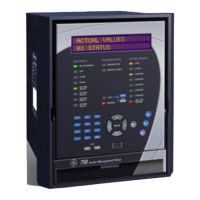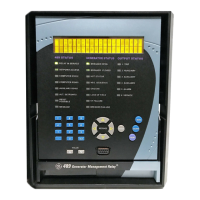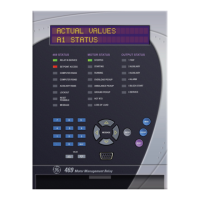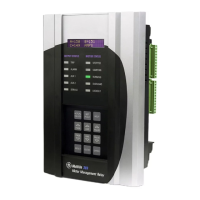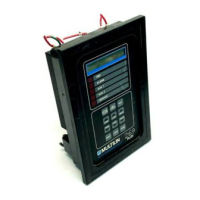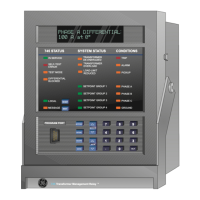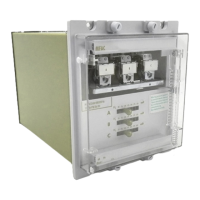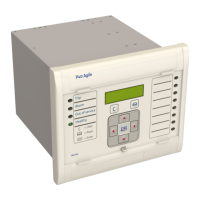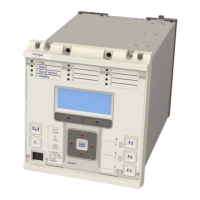Protection Schemes745
Transformer Management Relay
Commissioning
http://www.GEindustrial.com/multilin
7–12
GE Multilin
b) Minimum Pickup
1. The minimum pickup of the Phase A element is measured by applying a funda-
mental frequency AC current to terminals H1 and G1, Winding 1 Phase A. Moni-
tor the appropriate trip and auxiliary contact(s) as the current is increased from
0 A. Compare the current value at which operation is detected against the
S4
ELEMENTS !" DIFFERENTIAL ! PERCENT DIFFERENTIAL !" PERCENT DIFFERENTIAL
PICKUP setpoint. Since the operating point is normally set quite low, fine control
of the current signal will be required to obtain accurate results.
2. The currents in the winding may be phase shifted or may have the zero-
sequence component removed due to auto-configuration (see Auto-
Configuration on page 5–5). As an alternate to calculating to relation of input
current to differential current, the differential current is displayed in
A2
METERING ! CURRENT !" DIFFERENTIAL. Ensure that the displayed value is the
same as the minimum pickup setting when the element operates.
3. Check that the Trip and Message LEDs are flashing and one of the following trip
messages is displayed:
LATCHED a: Percent Differential, or OPERATED a: Percent Differential
The above messages will indicate either
OPERATED or LATCHED depending on
the
S4 ELEMENTS !" DIFFERENTIAL ! PERCENT DIFFERENTIAL !" PERCENT
DIFFERENTIAL TARGET setting.
4. To independently verify that auto-configuration causes the currents to be as
measured, follow the rules outlined in Steps 5 to 9 below.
5. Look up transformer type in Table 5–1: Transformer Types on page 5–11.
6. For the phase shift shown for the particular set of vectors, determine the
processing applied to the current vectors for that winding from Table 5–2: Phase
Shifts on page 5–23.
7. Calculate the “dashed” current values using the equations in Table 5–2: Phase
Shifts on page 5–23. If applicable, use the zero-sequence removal computation.
This is applicable for all Delta windings and for both windings of a wye-wye
transformer. Compute the processed current vectors to obtain the “dashed”
values for that winding.
8. Calculate the CT correction factor for Windings 2 (and 3 if applicable) and apply
as necessary.
9. Turn the equations around to compute the threshold differential currents in
terms of the applied currents.
To check the threshold without performing computations, inject balanced 3-
phase currents into any winding. With balanced conditions, there is no effect on
magnitude due to phase shifting and zero-sequence removal has no effect.
However, the CT ratio mismatch is still applicable.
10. Repeat the minimum pickup level measurements for the Phase B (inputs H2 and
G2) and the Phase C element (inputs H3 and G3).
The above tests have effectively verified the minimum operating level of the three
harmonic restrained differential elements. If desired the above measurements may
be repeated for the phase inputs for the other winding(s). The results should be
identical.
c) Verification of Local Reset Mode
1. Set the differential element with a latched target. Apply enough current to
cause the relay to operate, then remove the current. The Trip LED and the
Phase LED should be latched on.
2. Set
S1 745 SETUP !" RESETTING ! LOCAL RESET BLOCK to “Disabled”.
3. Press the RESET key. The target should reset.
4. Set
S1 745 SETUP !" RESETTING ! LOCAL RESET BLOCK to “Logic Input 1(16)”.
NOTE
NOTE
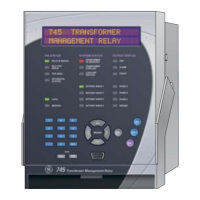
